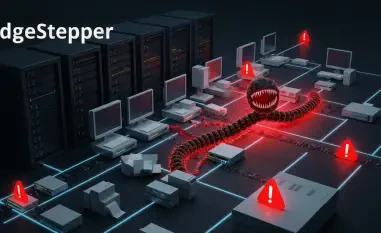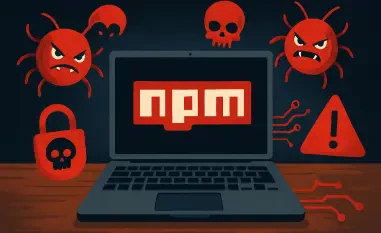Diving into the world of cybersecurity, we’re thrilled to sit down with Malik Haidar, a seasoned expert with a wealth of experience in tackling digital threats across multinational corporations. With a sharp focus on analytics, intelligence, and integrating business strategies into security frameworks, Malik has a unique perspective on the evolving landscape of cyber risks. In this interview, we explore critical vulnerabilities in widely used systems like VPNs, the tactics attackers employ to exploit them, and the broader implications for organizations. From dissecting specific flaws to discussing industry-wide challenges, Malik offers invaluable insights into protecting digital infrastructures in an increasingly hostile environment.
How did you first become aware of the WatchGuard Fireware vulnerability, tracked as CVE-2025-9242, and what makes it stand out in your mind?
I came across this vulnerability through recent disclosures by cybersecurity researchers, and it immediately caught my attention due to its severity, with a CVSS score of 9.3. What stands out is that it’s an out-of-bounds write vulnerability in the Fireware OS, which essentially means the system writes data beyond the intended memory boundaries. This can lead to catastrophic consequences like arbitrary code execution. It affects a range of versions, from 11.10.2 to 12.11.3, and targets both mobile user and branch office VPN setups using IKEv2. The fact that it’s exploitable without authentication on an internet-facing service makes it a prime target for attackers.
Can you break down what an “out-of-bounds write vulnerability” means for someone who might not be familiar with the technical jargon?
Absolutely. Think of memory in a computer as a row of mailboxes, each with a specific size and address. An out-of-bounds write happens when a program tries to stuff too much mail—or data—into a mailbox that’s too small, or even into a neighboring mailbox it wasn’t supposed to touch. This can overwrite critical information, crash the system, or, worse, let an attacker sneak in malicious instructions. In the case of CVE-2025-9242, this flaw allows attackers to manipulate the system’s behavior and potentially take full control.
What is it about this vulnerability that makes it so appealing to malicious actors, especially groups like ransomware gangs?
This flaw is like a goldmine for ransomware gangs because it checks all their boxes. First, it’s on an internet-exposed service, meaning they don’t need to be inside a network to strike—they can hit it from anywhere. Second, it requires no authentication, so there’s no need to steal credentials or bypass login barriers. Finally, it allows arbitrary code execution, giving attackers the ability to run whatever malicious software they want, like ransomware, to lock down systems and demand payment. It’s a direct path to compromising perimeter defenses, which is often the first step in a larger attack.
Could you walk us through the process of how an attacker might exploit this specific flaw in the WatchGuard system?
Sure. The vulnerability lies in a function called “ike2_ProcessPayload_CERT,” which handles part of the VPN connection process. During the IKE_SA_AUTH phase—basically the handshake where the client and server verify each other—an attacker can send a specially crafted piece of data that overflows a local stack buffer because there’s no proper length check on the identification data. This overflow lets them manipulate the system’s memory, hijack the flow of execution, and run their own code remotely. What’s particularly dangerous is that this happens before any certificate validation, so the attacker doesn’t even need valid credentials to reach this vulnerable point.
Once an attacker exploits this vulnerability, what are the potential next steps they might take to deepen their control over the system?
After gaining initial access through this flaw, attackers face the challenge that WatchGuard Fireware OS doesn’t have a typical interactive shell like you’d find in standard Linux systems. However, they can get creative. One method researchers have highlighted is spawning a Python interactive shell over TCP, which gives them a way to issue commands remotely. From there, they might escalate further by remounting the filesystem as read/write, downloading additional tools like a BusyBox binary, and setting up a full Linux shell environment. This progression turns a small foothold into complete system domination, allowing them to deploy malware or exfiltrate data.
How has the response from WatchGuard shaped up in addressing this critical issue, and what challenges remain for users?
WatchGuard acted swiftly by releasing patches for affected versions, including 2025.1.1, 12.11.4, and specific updates for other 12.x series. That’s a solid step to mitigate the risk for users on supported versions. However, a big challenge remains for those on older versions like 11.x, which have reached end-of-life and won’t receive patches. For these users, the only real option is to upgrade to a supported version or replace the hardware if it can’t handle the newer software. Delaying action isn’t an option given the severity of this flaw—organizations need to prioritize this to avoid being low-hanging fruit for attackers.
Shifting gears a bit, the broader cybersecurity landscape includes other concerning flaws, like CVE-2025-3600 in Progress Telerik UI for AJAX. Can you shed some light on what this vulnerability entails?
Certainly. CVE-2025-3600 is a denial-of-service flaw with a CVSS score of 7.5, affecting Progress Telerik UI for AJAX, a tool used for building web interfaces. At its core, it allows attackers to overwhelm the system, effectively shutting down services and making them unavailable to legitimate users. What’s interesting—and worrying—is that depending on the environment, this flaw can escalate beyond just denial-of-service to remote code execution. Factors like specific code configurations or insecure components in the target system can open the door to deeper exploitation. It’s a reminder that even flaws labeled as less severe can have outsized impacts under the right conditions.
Looking ahead, what is your forecast for the future of VPN security given the increasing sophistication of cyber threats?
I think VPN security is at a critical juncture. As more organizations rely on remote work and distributed networks, VPNs remain a cornerstone of secure access—but they’re also becoming prime targets. We’re seeing attackers get smarter, focusing on pre-authentication flaws and internet-facing services like we’ve discussed. My forecast is that we’ll see a push toward zero-trust architectures, where VPNs are just one layer of defense rather than the sole gatekeeper. Vendors will need to double down on secure coding practices and rapid patch deployment, while organizations must prioritize timely updates and monitoring for anomalous activity. The cat-and-mouse game with attackers isn’t going away, but with proactive measures, we can stay a step ahead.













